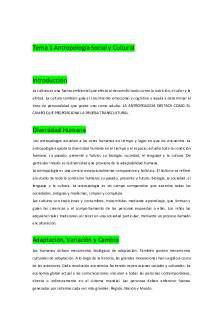Sharing of social and cultural backgrounds PDF

| Title | Sharing of social and cultural backgrounds |
|---|---|
| Course | Understanding culture, society and politics |
| Institution | Our Lady of Fatima University |
| Pages | 2 |
| File Size | 48.6 KB |
| File Type | |
| Total Downloads | 112 |
| Total Views | 161 |
Summary
Learning about different kinds of dishes....
Description
Sharing of social and cultural backgrounds Cultural Identity – The cultural identity of anb individual refers to the identity or feeling of belonging to a group. It is considered as part of a person’s self-conception and self-perception. It pertains to one’s nationality, ethnicity, religion, social class, generation, locality or any kind of social group that has its own distinct culture. As to cultural awareness, it connotes to the ability of a person to recognize the different beliefs, values and customs that someone has based on that individual’s origins. This allows a person to build a more successful personal and professional relationship with others in a diverse environment. In fact, a person’s state, region or country of origin and local customs heavily influence his/her cultural background.
Cultural Background – on the other hand, essentially consists of the ethnic, religious, racial, gender, linguistic or other socioeconomic factors and values that shape an individual’s upbringing. The cultural background can be shaped at the family, societal or organizational level. Sociologically, people with different cultural backgrounds need to interact with each other. Such interactions lead to strong relationships that would help build diverse communities and enable them to achieve predetermined goals. For example, in the Philippine society, it is necessary to work effectively with people from different regions or with those who speak a different language to promote economic development and other primary socio-cultural undertakings.
Thus, although it is important to learn about the cultural identities of other people and succeed in working together, each one must primarily understand his own culture so he can appreciate other cultures as well. Concrete understanding of one’s culture starts with recognition of the values, customs and traditions passed down to us by our forebears or those acquired from personal experiences while interaction in a given society. In fact, we can learn about other people’s culture by interacting with them, by evaluating their biases towards other cultures, by inquiring pertinent questions and by simple observations.
GENDER AND SEXUALITY A common distinguishing factor of a person’s cultural background is gender and sexuality . Gender refers to the personal traits and social roles of the male and female members of societ. Sexuality is the state of being either masculine or feminine. 1. A person’s masculinity or manhood consists of a set of attributes, behaviors and roles generally associated with men. 2. A person’s femininity or womanhood refers to a set of attributes , behaviors and roles generally associated with women.
3. A person may experience identity crisis when he/she does not accept or understand his/her sexuality or is unable to understand his/her status. SOCIO-ECONOMIC STATUS Another common cultural identification factor is the level of an individual’s social standing and financial position in the society. This is known as socio-economic status, a personal or family’s financial and social esteem on the basis of income, education, and occupation. Hence, it is the totality of a person’s social position and wealth combined.
The Socio-economic class refers to the status of every individual from the sociological and economic points of view. Social status means a person’s standing or rank in the social ladder of stratification based on prestige, power, popularity, etc. economic status means a person’s place in the society’s economic stratification based on wealth, property, and total assets.
ERTHINICITY Is a condition in which a social group belongs to a common national or cultural tradition. The adjective ethnic relates to large groups of people who have certain racial, cultural, religious, or other traits in common. The Philippines are inhabited by different ethno-linguistic groups converted to Christianity, particularly the lowland-coastal groups, and adopted many foreign elements of culture. Ethno-linguistic groups include the Ivatans, Ilocanos, Pangasinenses, Kapampangans, Tagalogs, Bicolanos, Visayans (Masbatenos, Hiligaynons/ilonggos, Cebuanos, Boholanos, Warays and Surigaonons) Maranaos, Subanons and Zamboanguenos....
Similar Free PDFs

SEO and social sharing
- 13 Pages

Modelling and Sharing
- 2 Pages

Antropología Social Y Cultural
- 120 Pages

Cultural studies social theory
- 23 Pages
Popular Institutions
- Tinajero National High School - Annex
- Politeknik Caltex Riau
- Yokohama City University
- SGT University
- University of Al-Qadisiyah
- Divine Word College of Vigan
- Techniek College Rotterdam
- Universidade de Santiago
- Universiti Teknologi MARA Cawangan Johor Kampus Pasir Gudang
- Poltekkes Kemenkes Yogyakarta
- Baguio City National High School
- Colegio san marcos
- preparatoria uno
- Centro de Bachillerato Tecnológico Industrial y de Servicios No. 107
- Dalian Maritime University
- Quang Trung Secondary School
- Colegio Tecnológico en Informática
- Corporación Regional de Educación Superior
- Grupo CEDVA
- Dar Al Uloom University
- Centro de Estudios Preuniversitarios de la Universidad Nacional de Ingeniería
- 上智大学
- Aakash International School, Nuna Majara
- San Felipe Neri Catholic School
- Kang Chiao International School - New Taipei City
- Misamis Occidental National High School
- Institución Educativa Escuela Normal Juan Ladrilleros
- Kolehiyo ng Pantukan
- Batanes State College
- Instituto Continental
- Sekolah Menengah Kejuruan Kesehatan Kaltara (Tarakan)
- Colegio de La Inmaculada Concepcion - Cebu











